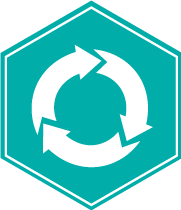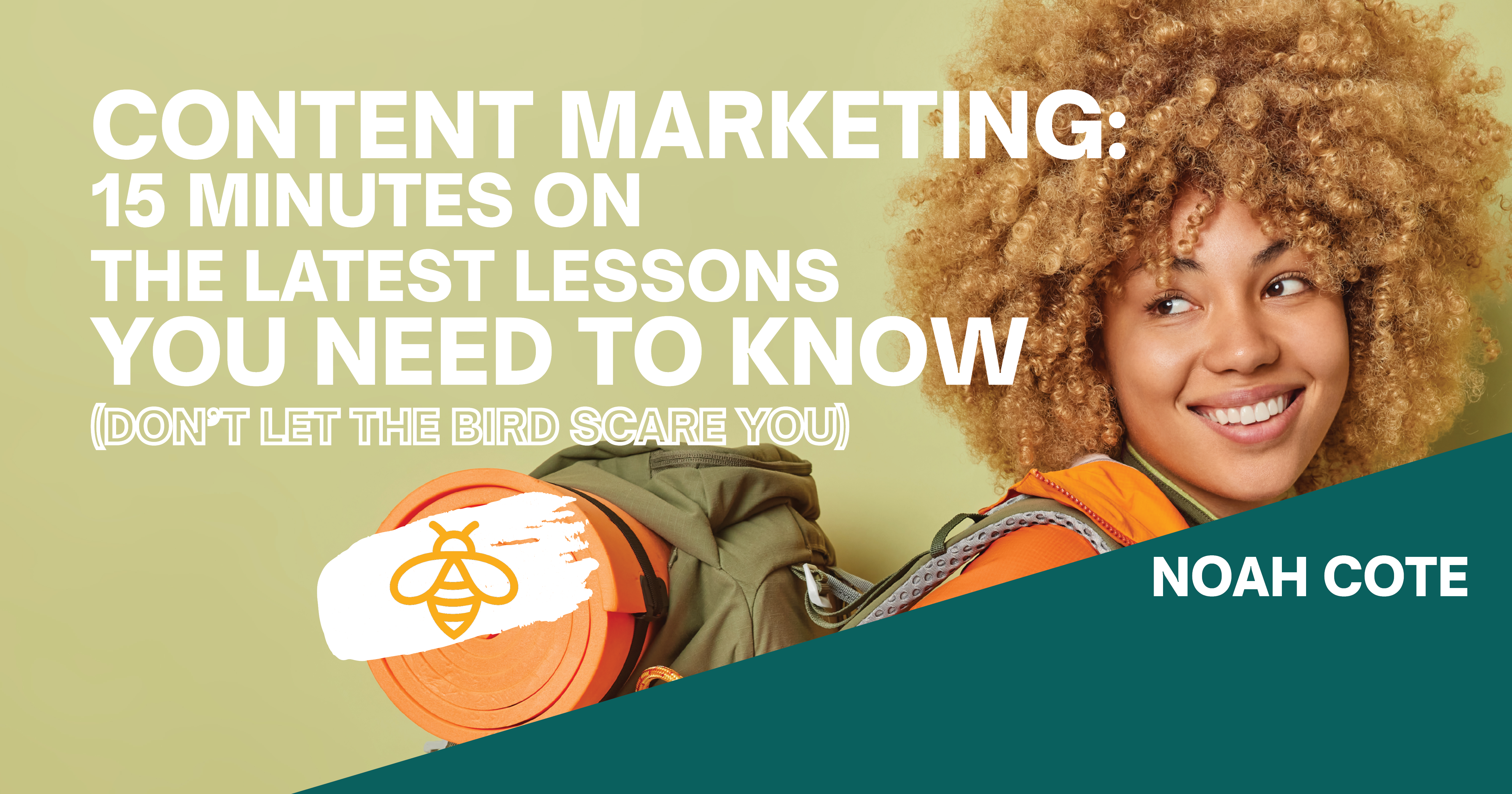How one giant bird taught Spanish to millions using the power of fear.
In September 2021, the social media coordinator for the popular language-learning app Duolingo posted a video on TikTok that earned 3.6 million views.
If you’re like me and you hear about a brand going viral, your first question is probably: What happened? What could Duolingo post to get so popular? Explosions and car chases? A list of their many product features? A customer testimonial? No.
The six-second video features their social media coordinator being terrorized in a boardroom by a seven-foot tall green owl.
And you might be thinking this is just a flash in the pan; brands pop all the time then we forget about them and their bottom line remains the same. But two months later, Duolingo’s follower count had risen from 100,000 to 1.7 million. And people weren’t just watching their content – they were interacting with it too. For context, most marketing experts agree a good engagement rate is anywhere from 1% to 5%.
Duolingo’s engagement rate hovers around 19%. That means about one in five people who see Duolingo’s content likes, comments on or shares it.
One video sparked a meme that transformed Duolingo’s online persona and skyrocketed their brand to international relevance among the youngest and hardest to reach audience. As for their product, Duolingo is now the fourth highest ranking education app in the world.
When done right, this is the power of content marketing.
What is content marketing?
Whether you’re a marketer, an association leader or an audience member, you’ve probably seen the term and wondered to yourself, what is content marketing?
We can probably trust the definition from the good folks at the Content Marketing Institute:
“Content marketing is a strategic marketing approach focused on creating and distributing valuable, relevant, and consistent content to attract and retain a clearly defined audience — and, ultimately, to drive profitable customer action.”
Put simply, this is creating content your audience wants to see that stimulates interest in you.
It’s hard to navigate today’s digital world without experiencing a little content marketing. We all live our lives online to varying degrees, whether it’s through social media or our endless piles of emails or just coming home after work to sit on the couch and fall down the YouTube rabbit hole until it’s time for bed.
And I bet you, if you searched your inbox or scrubbed through your subscriptions right now, you’d find an instance of you being marketed to, whether you knew it or not. Maybe it’s your favorite podcast brought to you by Squarespace, or a brand’s newsletter you signed up for a few months ago to stay up-to-date in finance or tech.
Blog posts, podcasts, YouTube and other online videos, newsletters, even TV shows and documentaries, are all examples of content marketing tactics, or actions used to achieve a marketing goal. These tactics make up the larger, overarching strategy.
Say you’re the head of a dirt bike association. Your top three goals might be to engage your membership, grow your base and make money. So you corner your sales and marketing people and poke ‘em with sharp sticks until they spit out a plan.
Goals: Engage your members, grow your audience and sell memberships.
Okay, so what’s the roadmap that will help you get from where you are now, to accomplishing all those goals? That takes strategy. So let’s pick one.
Strategy: Communicate that your association is the authority in your industry.
Alright, people want the best, and if you can show them you’re the best, people will want you, right? So, how do you communicate to people that you’re the authority in your industry? Well, you need a "big idea," so let's think it through. If they’re interested in dirt bikes, they might be interested in meets and races. Some of those people are probably interested in winning those races and you have a ton of resources to help them make that happen, so you’ll want to go with a big idea that gets them what they want, grows your members, creates a positive association with your brand and all that good stuff.
Big idea: Our association is the resource you need to win your next big race.
Boom, now you’ve got the bones of a campaign. You decide you’ll let your marketing department eat for another day if they come up with tactics that accomplish this strategy: social posts, an inbound marketing campaign and even a landing page on your website to tie everything together, all promoting your resources to win motocross races. But then they come back to you with a nearly incomprehensible idea.
What if we create an entire documentary on all our members who have won races? We could show awesome footage, have them explain their strategies and say nice things about our association all in one go?
They go on to use strange words like content marketing and engagement. But why on earth would we sink that much time and energy into marketing when we could just send an email or put up some billboards and call it a day? What about good ol’ fashioned sales, and traditional advertising?
Well, let’s talk about it.
content marketing vs. Traditional Advertising: Commercials, Taglines and Don Draper, Oh no!
The earliest ads are traced back to the ancient civilizations of Egypt, Mesopotamia and Rome, where tavern owners and merchants put signs on the front of their establishments to let passersby know of the good stuff inside. Then, advertising arguably hit its golden age during the birth and rise of television in 50s and 60s America. From Rome to Ray-Ban, all traditional ads exhibit three common rules:
It's an interruption
It’s propaganda
It’s paid for
You don’t get to choose when you watch a TV commercial, it just shows up when you’re trying to watch Jeopardy. The commercial is typically composed of information of a biased nature used to promote the advertiser’s point of view, which sure sounds like propaganda to me. Then, the advertiser must pay the network every time the commercial airs, otherwise, it goes exactly nowhere. And let’s not forget, even when it does air, there’s no real way of measuring whether or not a commercial helped move the advertiser toward their goal.
Some examples of traditional advertising tactics you’ve probably encountered are:
Television commercials
Billboards
Print ads
Radio spots
Telemarketing
Over the years, brands have spent billions on developing these tactics to present solutions to your challenges. If you’re a geek about this stuff like me, you probably have a few favorite examples, like the classic self-deprecating Volkswagen print ads or the groundbreaking Man Your Man Could Smell Like Old Spice campaign. Trouble is, most people, and most people in your audience, probably aren’t marketing geeks like me. Most people are completely “ad fatigued” and this is in no small part due to a natural evolution.
Remember radio? People used to be crazy for radio, listening to all kinds of music and shows. There were always ads for soap flakes and the military, but we didn’t care because they were few and far between. Plus, the alternative was going outside and playing with that wheel and stick thing.
But then in the 1950s, people started buying TVs. All of a sudden, radio listenership was dropping like a stone and stations had to do something to pay the bills. So they started selling more ads. Over the years, listenership kept dropping and ads kept taking up more and more of the airspace. Fast forward to today, and I can’t think of the last time I heard a song on the radio.
I say all this to say the same thing happened to TV with the advent of the internet. But so too did it happen to the physical world. Billboards, bus benches, posters, from your telephone to Times Square, ads, ads, ads, as far as the eye can see, interrupting us. People see upwards of 10,000 advertisements every day. Of all those ads, how many really break through? Who is really getting their money's worth from all that media buy? The forward-thinking marketers knew there’d be a breaking point where we’d hit total saturation. And some folks, like John Oppendahl, figured there had to be a better way.
John was a newspaper publisher, and in 1996, he was speaking at an industry roundtable when he coined the term “content marketing” to refer to ideas like Weight Watchers Magazine, a wildly popular periodical that contained fat-loss tips and tricks as well as opinion pieces on women's issues. It also generated a hell of a lot of interest in Weight Watchers.
Suddenly, everyone and their marketing coordinator was scrambling to incorporate this shiny new strategy into their marketing. Associations developed deeply informative trade magazines, Hasbro developed a whole smorgasbord of awesome Saturday-morning cartoons like Transformers and G.I. Joe, and suddenly every brand had its own blog, divulging trade secrets to a dedicated fandom.
This meant audiences were no longer being begged for their attention. They were begging brands for more content. And the best part? Content works.
In fact, studies show overall growth rates are up to 30% higher in companies that incorporate content marketing into their strategy. And you don’t need a doctorate to understand why these content marketing models kick ass. Just think about our association’s dirt biking documentary from before, vs a traditional advertising model.
Remember, advertising is an interruption, (blegh), propaganda (yuck) and costs a ton of money (eek!). Put that up against an association-led documentary. This is marketing that’s permission based, (ooh!) tells the stories of real people (wowie) and can be entirely self-funded through sponsorships (jinkies!).
And it’s not just the fact that this works better for your bottom line. More importantly, this is a way forward for audiences and marketers that doesn’t suck out our souls. How many more billboards can we make? How many more emails can we blast?
These are very different questions than, how many more minds can we blow? How many more laughs can we share?
How many more lives can we change?
how Does content marketing work: What we Can learn from duolingo
Let’s get back to the terrifying bird. The point here is not that Duolingo made content for content’s sake. Duolingo took all of marketing’s best practices and worked to build them into an overarching strategy.
See, it’s important to note this wasn’t the first video Duolingo posted. They had already published 31 videos, all of which earned between 45,000 and 550,000 views. They were playing the content game, like many businesses, by saying what they wanted to say. They have videos of how to use their app, helpful examples of real-world language lessons and promos for their events. And with every video they released, they got half-decent views for an internationally respected brand, 40 thousand here, 200 thousand there. But if you look at the comments of those videos, you’ll see a trend.
As soon as Duolingo posted the first video that prominently featured their owl mascot, aptly named “Duo,” the video popped off with 1.4 million views. But the real value was in the comments, that were filled with jokes making reference to the app’s reminder system.
See, how Duolingo works, is you pick the language you want to learn, and they set you on course with a daily lesson. If you don’t open the app in 24 hours, you’ll get a popup reminder. These reminders increase over time and if you stay away from the app long enough, they’ll change to more pointed jabs like, “Your Japanese lessons won’t take themselves,” or the slightly more ominous, “These reminders don’t seem to be working. We’ll stop sending them for now.”
So after a few popular videos all got a ton of comments making jokes about the audiences’ fear for their lives if they didn’t complete their Spanish lesson — with one clever commenter posting “Please give my brother back,” Duo did what very few brands do and got on the same wavelength as their audience.
Remember in our recent post about word-of-mouth marketing where we said propaganda written by its audience is representation, and that’s all people really want?
Creating a two-way line of communication, meeting your consumer where they are, and acting with authenticity and transparency are often, not always, the keys that separate successes from failures, and turn a profitable brand into a beloved brand.
So many companies tout their dedication to their customer, yet still pump out piece after piece of content that only speaks to their shareholders. Do you think any of Duolingo’s board members were asking for a villainous mascot? But they let Zaria Parvez, (now Duolingo's global social media manager), do her job. The audience noticed and supported that creativity and authenticity, and Duolingo’s bottom line rose to the top of its industry.
Duolingo stopped saying what they thought they should say, and started creating content people actually wanted to see. This skyrocketed their reach, created a positive association with their brand, and ultimately, made themselves top-of-mind in their audience when it was time to pick a language-learning app.
Content, meet marketing. 🤝
Okay, so, Content Marketing key takeaways
1. Content first, marketing second.
Create your content with your audience of real people in mind; people who want to laugh or learn or be inspired by the things they watch. Be careful not to create content that only works to market.
2. Listen, speak, rinse, repeat.
Like all marketing, success comes in iterations. When you're creating your content, make sure you have a plan in place to collect feedback from your audience. Then, use that feedback to guide your future decision making.
3. It's time for your Spanish lesson.
Hoo!
Want help starting your own content marketing journey?
We invite you to join us in Rosemont, Illinois for .orgCommunity’s Solutions Day on September 29. Associations Solutions Jeff Baker will be delivering our presentation, Embracing Docuseries Models to Future-proof Your Profession/Industry. He’ll reveal the actionable insights we’ve learned while designing, creating and executing association-centric docuseries. If you want to learn how to take the concepts we've just discussed and apply them to your brand, I strongly recommend you check it out by hitting the button at the bottom of this post to visit the Solutions Day registration page and sign up.






















